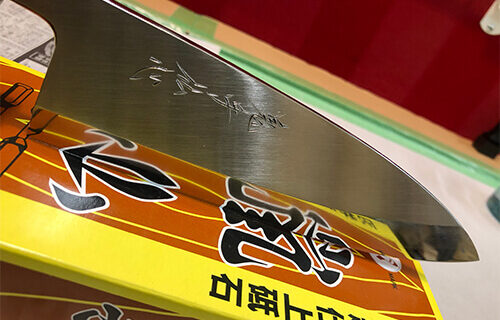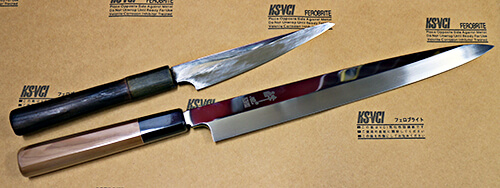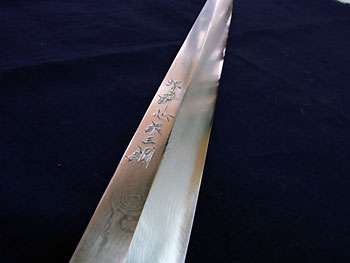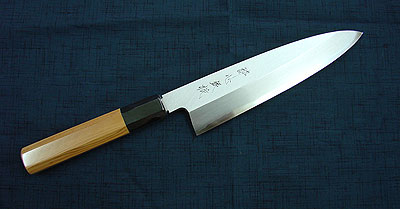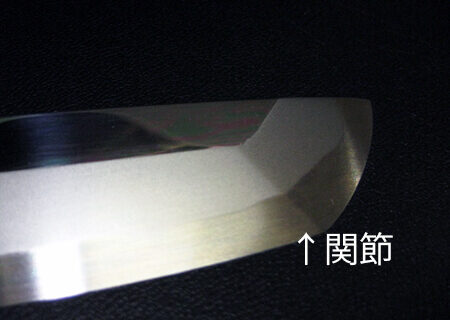Kishubusshin
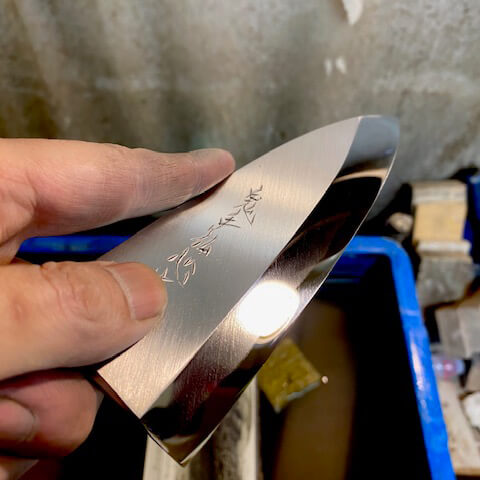
Today, I performed the Honbaduke sharpening on a Deba knife intended for household use. The customer is a woman who mentioned that she often catches a large quantity of fish such as red snapper and yellowtail in offshore fishing ponds. Considering her needs, she purchased the Kishubusshin knife known for its excellent edge retention and balanced weight, making it easy to handle even for women.

First, we’ll use a diamond sharpening stone to establish an initial contact on the entire blade. By removing any visible steps on the cutting edge at this stage, the subsequent sharpening process becomes much easier.
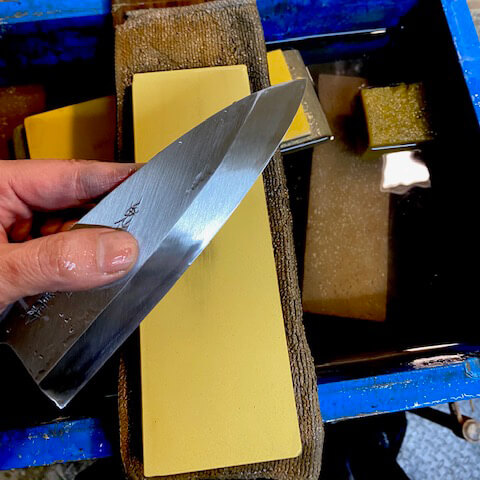
From the middle of the blade to the edge, intentional convexing in a Hamaguri style is done, so it’s okay to leave some steps. To achieve a clean finish, it is necessary to carefully sharpen the tip and curve of the blade.
For this sharpening, we used a diamond sharpening stone #325 followed by a #3000 finishing stone. The #3000 finishing stone is a relatively new stone with decent abrasive power. To give you a rough idea, it provides a similar sensation to using Kitayama #8000.
One common occurrence with abrasive stones that have strong sharpening power is…

With abrasive stones that have strong sharpening power, such as the #3000 finishing stone used in this case, it is common to see step-like scratches similar to those of a #3000 stone, as shown in the photo… This can also occur with super ceramics and Shapton stones, as they have strong abrasive properties. Our approach is to gently and meticulously work to remove these step-like scratches, using a careful and delicate touch.

Once we reach this stage, we transition to using a fine finishing stone with lower abrasive power to achieve a polished and glossy finish.

We skipped from the #3000 finishing stone to the #10000 super finishing stone for polishing. The blade appears shiny and sharp, but in reality, it becomes too smooth and slippery… It can easily cut through newspaper, but it may not be suitable for cutting fish. This type of polishing is specifically done with the Itohiki edge in mind.

I sharpened the back side a bit more than usual. While it is true that sharpening it further would make the blade stronger, I tried to find a balance between the Itohiki edge and a slightly rounded Hamaguri edge. Once it leaves my hands, I can’t do anything more, so I always feel a bit nervous. Especially considering its intended use in households, I want to add as many precautionary measures as possible. However, since you specifically chose the Kishubusshin, I want you to fully experience its performance! Fish caught in offshore fishing ponds tend to be oily, right? “I wonder if it would have been better to make the edge even crisper…” That’s something I slightly regret. P.S. We have received many sharpening, repairs, and resets from various locations. We are working on them in order, so please wait a little longer.
hibishugyo 2020-03-06
